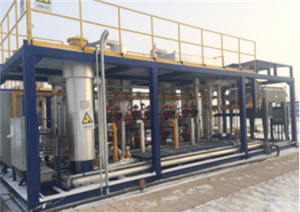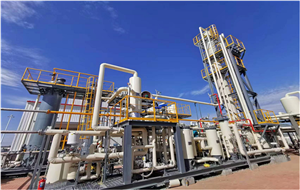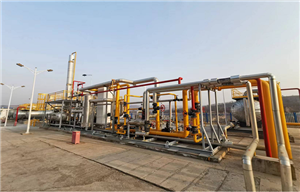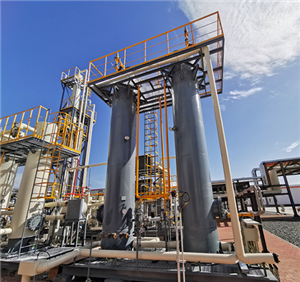Shell Study Quantifies Reduction of GHG Emissions using LNG Fuel

In the climate debate, LNG has great potential to diversify fuel consumption and reduce greenhouse gas emissions from ships and trucks. This is confirmed by the Shell LNG study Liquefied Natural Gas – New Energy for Vessels and Trucks? – Facts, Trends and Perspectives, which Shell developed with the German Aerospace Center (DLR) and the Technical University of Hamburg.
Assuming that by 2040 there will be 6,000 (mainly) large LNG ships worldwide and 480,000 LNG trucks in the EU, greenhouse gas emissions from shipping could be reduced by 132 million tonnes by 2040 and from heavy trucks by up to 4.7 million tonnes, depending on engine technology. With a 30% share of organic LNG, an additional reduction of around 20% would be possible for trucks. Greenhouse gas emissions for the entire German transport sector are currently around 166 million tonnes.
“We see great potential for LNG in shipping. This applies in particular to container ships, which have comparatively high fuel consumption due to their high power requirements. Passenger ships play a pioneering role. If LNG replaces heavy oil, there will be high emission advantages,” says Shell Chief Economist Dr. Jörg Adolf.
“In road freight transport, LNG is particularly suitable for heavy trucks as an alternative to diesel fuel. In order to achieve high emission savings, however, LNG from renewable energies such as bio LNG is needed,” explains DLR transport expert Dipl.-Ing. Andreas Lischke.
The International Energy Agency (IEA) assumes that global natural gas trading will grow by around two thirds by 2040 and that more than 80% of this growth will be covered by LNG. While today about 8 to 9% of the consumed natural gas is LNG, it will then be about 14%.
Ships make a significant contribution to the emission of traffic-related air pollutants. In addition, international maritime traffic accounts for around 3% of global carbon dioxide emissions. LNG is currently the only seriously discussed and market-ready alternative to oil-based marine fuels. Accordingly, the study assumes that the stock of LNG seagoing vessels will grow significantly faster than the total stock by 2040. Container ships in particular are developing dynamically here. Passenger ships such as cruise ships and ferries will play a pioneering role.
In road transport, LNG is mainly used for heavy trucks and semitrailer tractors. The number of heavy trucks and articulated lorries in the EU will increase by 307,000 to 2.76 million by 2040 if the current registration trends continue. 480,000 (17%) of these would then have an LNG drive and would substitute diesel fuel consumption of up to 11.5 billion litres. There are currently about 4,000 LNG trucks in the EU.
“The introduction/use of low-emission LNG requires a technology-open promotion of renewable energy resources for the provision of LNG. Infrastructure development must also be promoted. In order to convince users of LNG technology, reliable economic user benefits are needed; these can be created through regulatory or fiscal instruments,” says Adolf.
As a member of the BioLNG EuroNet consortium, Shell intends to set up 39 LNG filling stations along the main routes from Spain to eastern Poland in the medium term, 10 of them in Germany. Shell currently offers 9 LNG filling stations in the Netherlands, Belgium and Germany. More will be added in Germany this year.




